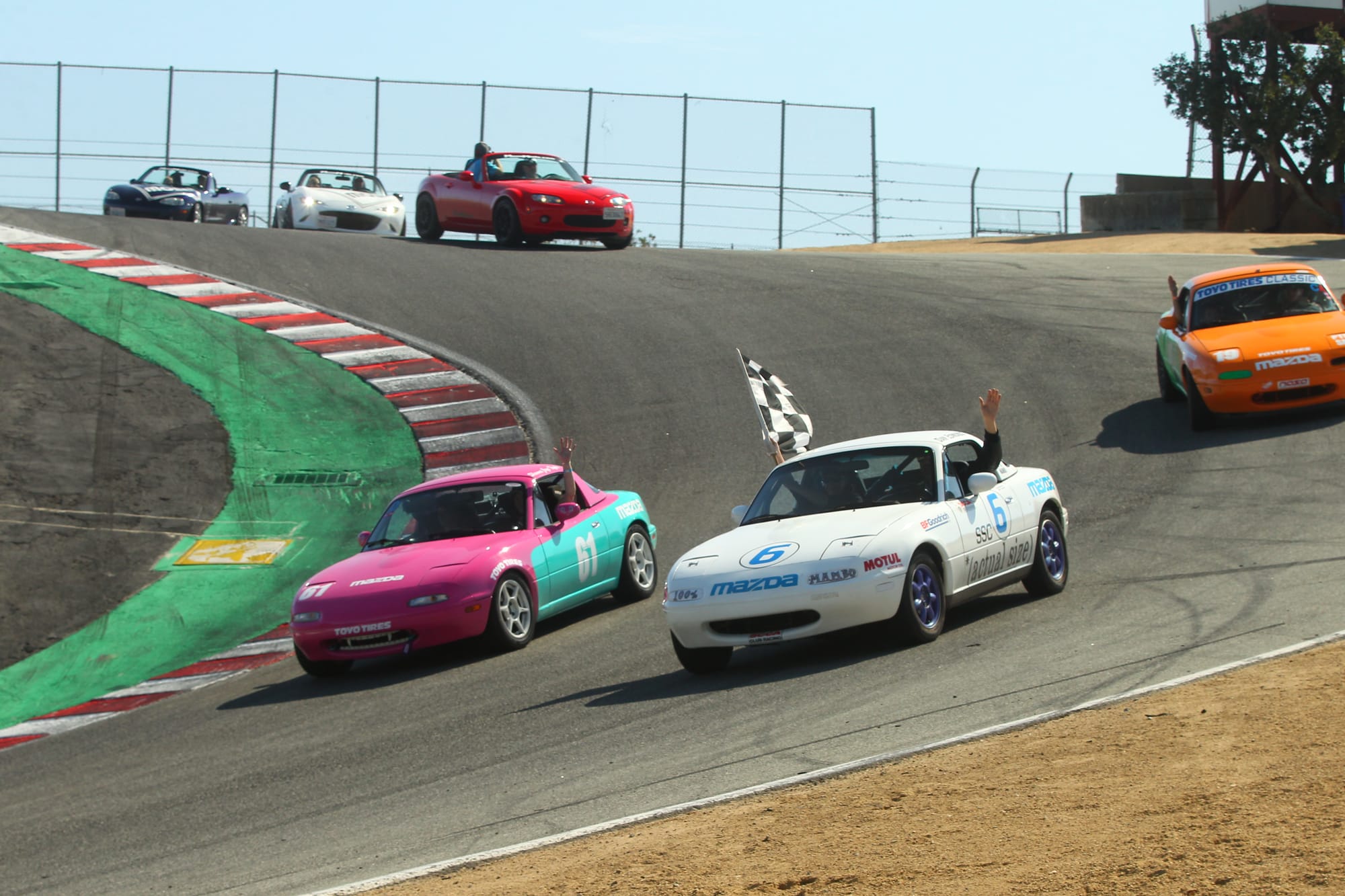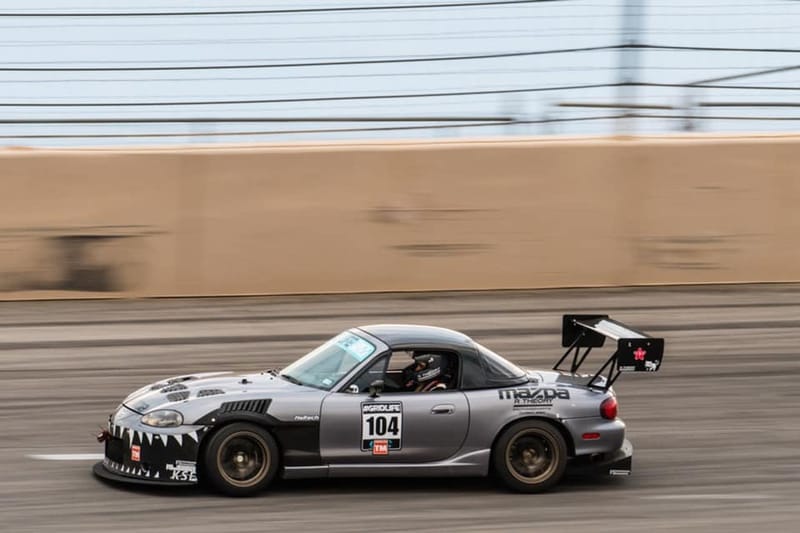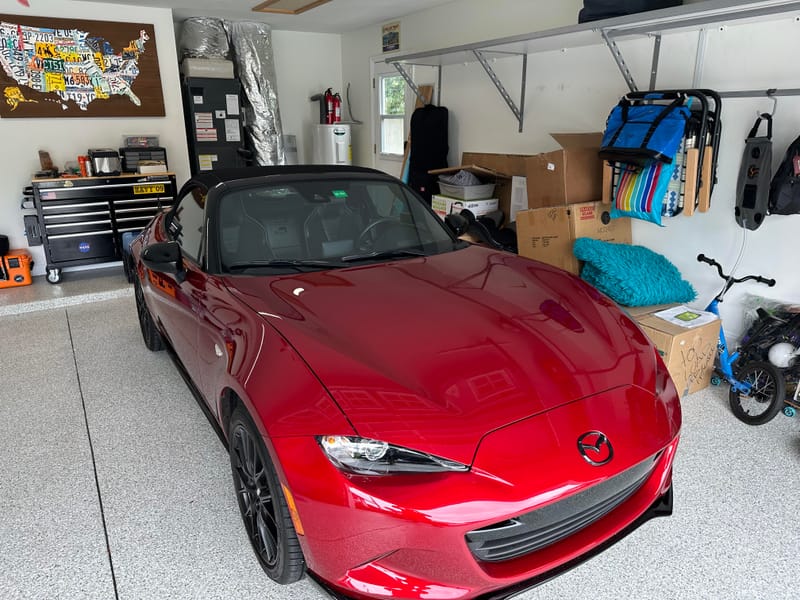Miata Track Noise-Limit Compliance: 90–92 dB Solutions That Work
On 90–92 dB days, tune for the mic, not the map: big rear muffler + resonator, longer mid-pipe, and a turn-down/side-exit aimed away from the station. Short-shift/lift at the booth, add timing/fuel there if allowed. Everywhere else, let it sing.

If your local track runs 90–92 dB days, you don’t have to neuter your Miata, you just have to be quiet at the mic. Most programs measure a short slice of the lap, so we’ll build and drive the car to be calm at that spot, then let it sing everywhere else.
How Tracks Actually Measure Sound
Most clubs (and many SCCA regions) use ANSI Type-2 meters set to A-weighting and “Slow” response. The microphone is usually about 50 feet from the course and mounted 3–4 feet high at a location where cars are under load, often a hill or corner exit. That means a few seconds of each lap decide your fate. Optimize for that mic zone and you can pass without ruining the rest of the lap.

Know Your Venue’s Sound Booth
WeatherTech Raceway Laguna Seca commonly runs strict 90 dB(A) days, with the primary sound station on the uphill between Turn 5 and Turn 6. Short-shifting or giving a tiny lift at that point is standard practice. Lime Rock Park’s muffled days are even tougher, often around 86 dB drive-by, so treat that as hard mode. In contrast, Thunderhill and Sonoma typically allow 101–103 dB; if you can make 90–92, you’re automatically good there.
Miata Exhaust Basics That Move the Needle
Removing a catalyst or jumping to large, straight primary tubing raises high-frequency content and overall SPL. Keeping both OE cats, or using a proper high-flow cat, paired with a long, packed resonator often drops several dB with negligible power loss. Rear muffler volume matters too: bigger cans with quality packing are quieter for a given flow. Quiet-tuned “touring” cat-backs that claim roughly 10–20% over stock sound are realistic passes on strict days if you retain the stock header. Resonators handle rasp, while Helmholtz or J-pipe branches target a specific boom band; think of them as frequency-specific helpers, not universal silencers.

Hardware That Consistently Helps Under 90–92 dB
For NA/NB cars, a solid recipe is OE header plus high-flow cat, a long resonator, and a large straight-through rear can. For NC/ND, a quiet-tuned cat-back with both OE cats, or an HFC plus a long resonator, works well. If you’re flirting with the limit, add directional turn-outs (often nicknamed “Laguna pipes”) that aim the wavefront away from the mic; these can buy a few dB with little to no performance hit. If you’re just 1–2 dB over, a tunable disc-type tip insert is handy for between-session adjustments.

When to Keep the Header Stock
On ND in particular, a header plus free-flow cat-back often fails 90 dB at Laguna unless paired with very quiet hardware and/or turn-outs. Many drivers simply reinstall the OE header for strict days, then switch back later.
Driving Techniques That Work
Short-shifting or a small lift right at the mic is the classic save. Script your lap so you’re under your barkiest RPM band as you pass the sound station. Use the far side of the track from the mic, every extra meter helps, and be mindful of line-of-sight. If your gearing plants you in the noisy range at the booth, a slightly taller tire can drop 200–300 rpm through that segment.
Testing and Verification
Use a proper Type-2 meter configured A-weight, Slow. Phone apps are fine for trends, not for numbers. To simulate the track, place your meter around 50 feet off your pass-by line at 3–4 feet high and do a drive-by pull in the exact gear and RPM you’ll see at the booth. Aim your turn-out away from the “mic side” and compare runs. Build a 2–3 dB safety margin for wind, temperature, and reflections.
Proven Miata Recipes by Generation
NA/NB (1990–2005). OE header, high-flow cat, long resonator, large rear can, and a 90° turn-out for strict venues. Pack a tunable tip insert for insurance and plan a short-shift at the mic.
NC (2006–2015). Quiet-tuned cat-back with both cats for strict days. A Helmholtz or J-pipe midsection helps target the boom band that tends to trigger the meter. Add a directional turn-out if needed.
ND (2016–present). The easiest path is stock header plus quiet cat-back and a turn-out, plus a tiny lift or short-shift in the mic zone. Headered ND builds usually need larger cans, an extra resonator, and turn-outs, and may still need a lift at Laguna.
Track-Day Add-Ons Worth Packing
Bring bolt-on 90° turn-outs sized for your tips, a V-banded clamp-on resonator you can add for strict days, and a disc-type tunable insert for that last 1–2 dB. These let you adapt between sessions without re-engineering the whole exhaust.
What Not to Rely On
Static or idle readings don’t predict drive-by numbers at wide-open throttle near peak torque. That’s what the track measures. Also, drone-only fixes can make the cabin nicer but may not touch the frequency that triggers the meter. Pair any trick pipes with real can volume and a proper resonator.
Venue Cheat-Sheet
At Laguna Seca 90 dB days, plan on both hardware and technique: quiet can, cats in place, turn-out, and a short-shift between T5 and T6. At Lime Rock’s stricter days, expect to stack every advantage, maximum muffling plus mic-management and often an insert. At Thunderhill and Sonoma, a 90–92 dB build is already compliant; use those days to baseline your meter and confirm your margin.
Start with a baseline test using a Type-2 meter, A-weight, Slow, and a 50-foot drive-by in the exact gear and RPM you’ll hit at the booth. Install a big rear can and long resonator while keeping the cats, then retest. Add a directional turn-out and retest again while placing the car on the far side of your “course.” Pack a tunable insert for 1–2 dB of insurance when weather tightens your margin. Finally, write a “sound-lap plan”: mark the mic on your track map and script your shift or lift through that segment.
FAQ
Will a quiet ND cat-back pass 92 dB? Often yes, if the header is stock and you manage the mic segment. A turn-out adds margin.
Do 90° turn-outs really help? Yes. Redirecting the wavefront away from the mic can drop drive-by readings by a few dB with minimal performance hit.
Are phone SPL apps good enough? Use them for trends only. Tracks rely on Type-2, A-weighted, Slow measurements at fixed geometry, match that when you test.




